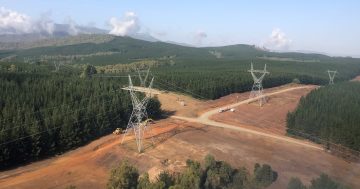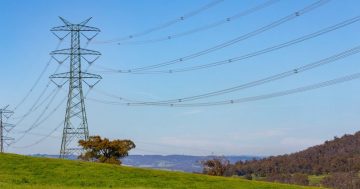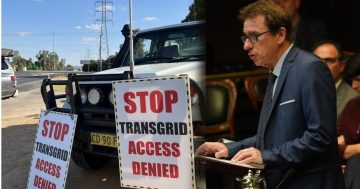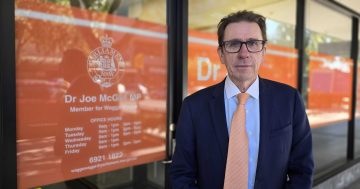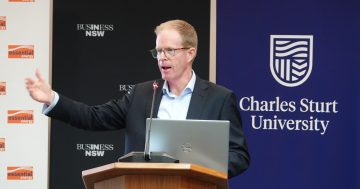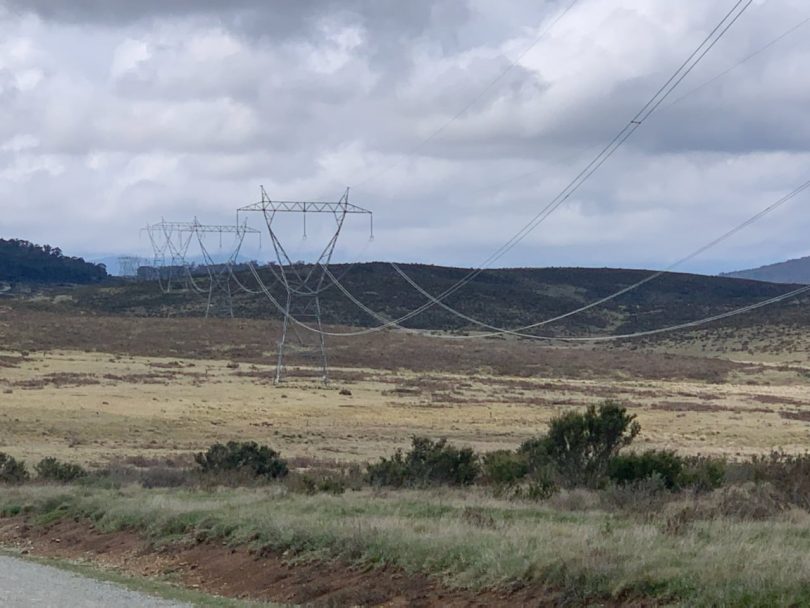
Some of the transmission lines already on public land along the currently proposed HumeLink route. Photo: Jen Dumbrell.
The Australian Energy Regulator (AER) has determined TransGrid failed to consider all credible options for its HumeLink project, in what is considered a big victory for landowners opposed to powerlines running through private land as per original plans.
This development is significant because failure to consider all credible options is a breach of the requirements of the ‘regulatory investment test for transmission’ (RIT-T), which specified that all reasonable options had to be considered in TransGrid’s Project Assessment Conclusions Report (PACR).
This means TransGrid will now have until 23 December, 2021, to explore a full double-circuit option for the path between Maragle and Bannaby.
HumeLink is considered an integral part of the Snowy 2.0 project, with the aim of enabling greater sharing of energy between Australia’s eastern states, and supporting the transition to renewable energy sources.
The project will involve 360km of proposed new transmission lines, and new or upgraded infrastructure at three substation locations. The route, as it stands, runs from Maragle to Wagga Wagga and Bannaby, travelling through private land in areas such as Gundagai, Bookham, Yass and Taralga.

Map of potential routes for TransGrid’s HumeLink project. Image: Supplied.
Landowners along the route have expressed disappointment with both the lack of consultation and their belief that TransGrid failed to explore a route that would be more direct and would use mostly public land.
The complaint made to AER by Tumut engineering company Wunelli Pty Ltd, courtesy of Lee Kingma, questioned why a substation at Wagga Wagga was deemed necessary, suggesting a direct route from Maragle to Bannaby should’ve been explored.
Mr Kingma also wanted AER to examine whether TransGrid had acted with transparency since introducing the project to the community.
The AER review supported Mr Kingma’s views, and TransGrid has been told to update its PACR with a suitable analysis of the option bypassing Wagga Wagga, and its cost comparison alongside TransGrid’s two preferred options at this stage.
While the result is pleasing for Mr Kingma, he remains somewhat pessimistic about the likelihood it will lead to any genuine change.
Acknowledging that there have been communication issues coming in both directions between the community and TransGrid, he said a lack of transparency and publicly available information since the proposal was first introduced has led to a frustrating period for landowners.
“They’ve always treated landowners with indifference,” said Mr Kingma.
“To the community and to landowners, and they never really contributed to landowners – they just take them for granted.
“What they’re dealing with now is the consequences of not trying to build up that trust and that relationship in the past five to 10 years.”
Many of the landowners along the proposed HumeLink route have had towers put on their property from prior projects.
Mr Kingma believes there is a significant level of distrust within the community from those prior dealings.
Original Article published by Max O’Driscoll on About Regional.







